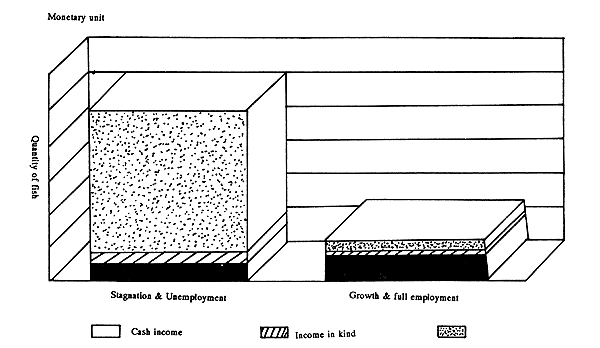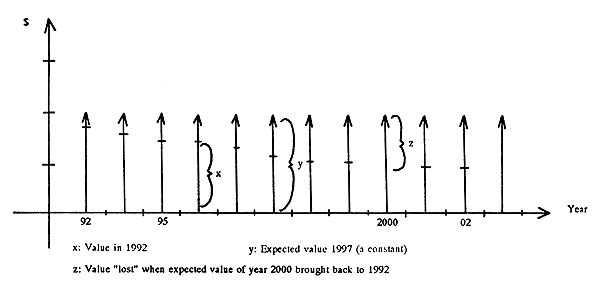Those public services that do not sell their services (like the Post Office, or the Railways) have no means of being self-sustaining. In order to pay (factors of production) staff and equipment these services depend on funds obtained from households: taxes.
The tax is a certain portion of the household's revenues which have been put aside to pay for common goods and services (road system; judiciary; health; schools). These services are essential for life (and therefore for production). Without them, in addition to enjoying their daily life much less, the population would be unable to produce goods and services at the level which tax-financed public services make possible. Their elimination would trigger an immediate drop in production and well-being.
The fishery administration has a similar role. One of its main purposes is to assure a sustained production of fish through capture fisheries and fish culture. This means an effort to maintain and increase national production/ income through support to fisheries and fish culture.
The fishery administration will argue that we need resources. Without them, either production will fall (Figure 7 in ALCOM report No. 9), or production would not increase the way it is now doing (Figure 8 in ALCOM report No. 9).
This argument, however, does not conclude by showing the quantities of resources needed. The answers are in fact obtained in the same way as they are obtained when deciding the quantity of manure poured into the fish pond (see Figure 6). First, the marginal productivity (expressed in increased growth in the fisheries/fish culture sector) needs to be positive. Second, given that the tax revenue never covers all needs, the marginal productivity of the last resources should not be lower than they are in other government services.
It will thus be easier to justify any expenditure on fish culture in areas where the resulting economic growth (farmers with idle resources; farmers with ponds needing to achieve higher productivity to keep pace with economic growth) will be higher, than in areas where the resulting economic growth will be smaller.
I contend that in areas where economies are stagnant and the population lives at subsistence levels, it is essential to find a means to stimulate production, and that the value of such a stimulus is much greater than might appear at first hand.
Farmers' income from a kg of fish: role of the “consumption effect”

Note: the concept of “consumption effect” is explained in the text
Net income of 5ha fish farm
Effects of discounting on investment decisions

In case the country has no fish culture, it would seem that an effort should start only if fish culture activities definitely offer better income - earning opportunities than any other activity.
I have described this “additional value” to future production as the consumption effect. This is the long-term increase in production that can be expected from even small increases in consumption. These would occur as a result of better nutrition; health; education and improvements in general living conditions.
In addition, although the consumption effect will come about over a long period, I argue that the future is important enough today, for us to give this effect serious consideration. Economists like to discount future effects (if you do so at a rate of 10% per year, what happens after 10 years is immaterial). I believe a “normal” discounting procedure would reduce the importance of future consequences of fish farming much more than the farmer and his household themselves would do.
Figure 13 is a pictorial representation of my view on the possible importance of the “Consumption Effect”. Figure 14 shows the effects that discounting has on today's value (equivalent) of future incomes (production).